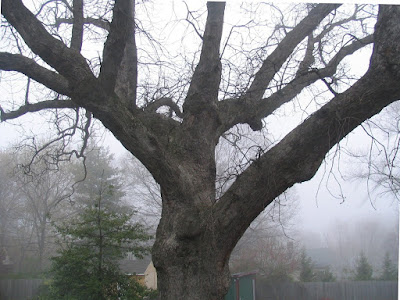Every year around this time I like to browse best-of-the-year book lists. Here are some of the books that caught my eye as possibly of interest to Natural Capital readers.
What have you read this year that you think we should look at? Leave a comment below.
From the
Association for the Study of Literature and the Environment Environmental Creative Writing Award:
Birdwatching in Wartime by Jeffrey Thomson
by Jeffrey Thomson
"In Thomson's poetry collection, the animals are real and so is the singing. Whether mourning a wren killed by the atomic bomb or riffing on Borges, Thomson pays exquisite attention to creatures in literature and the world that might otherwise be lost, enriching our aesthetic and ethical life. Birdwatching gives the lie to the notion that formalism is devoid of passion by drenching its finely-wrought lines in sensual detail and biting intelligence. That it manages to be funny and experimental at the same time is a small miracle. Everyone who wonders about the fate of the green fire in American letters should read this book."
From the
National Outdoor Book Awards:
Seeing Trees: Discover the Extraordinary Secrets of Everyday Trees , by Nancy Ross Hugo
, by Nancy Ross Hugo
"Author Nancy Ross Hugo is smitten with trees. In fact she’ll unabashedly tell you that tree viewing is as exciting as bird-watching. And you’ll see why. Just spend a little time paging through this book—sample a bit of Hugo’s personable and insightful writing, absorb Robert Llewellyn’s splendid photography—and it becomes clear. What this book does differently than many is to examine trees in a close up and personal manner: the resplendent emerging leaves of a white oak, the secreted and graceful immature seed pods of the redbud, the thrilling appearance of a red cedar flower. This striking and delightful book will draw your eyes upward toward the world of leaves and entwining branches, and like Hugo, you may find yourself smitten and thrilled by what you see.
From the
Orion Book Awards:
Insectopedia , by Hugh Raffles
, by Hugh Raffles
"A stunningly original exploration of the ties that bind us to the beautiful, ancient, astoundingly accomplished, largely unknown, and unfathomably different species with whom we share the world. For as long as humans have existed, insects have been our constant companions. Yet we hardly know them, not even the ones we’re closest to: those that eat our food, share our beds, and live in our homes. Organizing his book alphabetically, Hugh Raffles weaves together brief vignettes, meditations, and extended essays, taking the reader on a mesmerizing exploration of history and science, anthropology and travel, economics, philosophy, and popular culture. Insectopedia shows us how insects have triggered our obsessions, stirred our passions, and beguiled our imaginations."
From Mother Nature Network's
Best Green and Environmental Books of 2011:
Listed: Dispatches from America's Endangered Species Act , by Joe Roman
, by Joe Roman
"Author Joe Roman, a conservation biologist, delves into the question of extinction, and how we aught best prevent it. He writes about a number of extinct and near-extinct animals and their effects on the ecosystems that we live in too. His central narrative is the fascinating history of the Endangered Species Act, in the course of which he asks: does the landmark law, passed in 1973, actually work? In other words, does listing a species as endangered prevent it from becoming extinct? And if so, why are the numbers of extinct species going up instead of down? To answer this question, the author introduces us to fish, bison, woodpeckers, whales, wolves, panthers, and a variety of plants in need of protection, turning what might have been an academic book into one inhabited by a wealth of characters. The trees and birds we meet in "Listed" are charming ambassadors for the cause."
From
Amazon's Best Books of 2011 in Outdoors and Nature:
Mycophilia , by Eugenia Bone
, by Eugenia Bone


"An incredibly versatile cooking ingredient containing an abundance of vitamins, minerals, and possibly cancer-fighting properties, mushrooms are among the most expensive and sought-after foods on the planet. Yet when it comes to fungi, culinary uses are only the tip of the iceberg. Throughout history fungus has been prized for its diverse properties—medicinal, ecological, even recreational—and has spawned its own quirky subculture dedicated to exploring the weird biology and celebrating the unique role it plays on earth. In Mycophilia, accomplished food writer and cookbook author Eugenia Bone examines the role of fungi as exotic delicacy, curative, poison, and hallucinogen, and ultimately discovers that a greater understanding of fungi is key to facing many challenges of the 21st century. Engrossing, surprising, and packed with up-to-date science and cultural exploration, Mycophilia is part narrative and part primer for foodies, science buffs, environmental advocates, and anyone interested in learning a lot about one of the least understood and most curious organisms in nature."









































